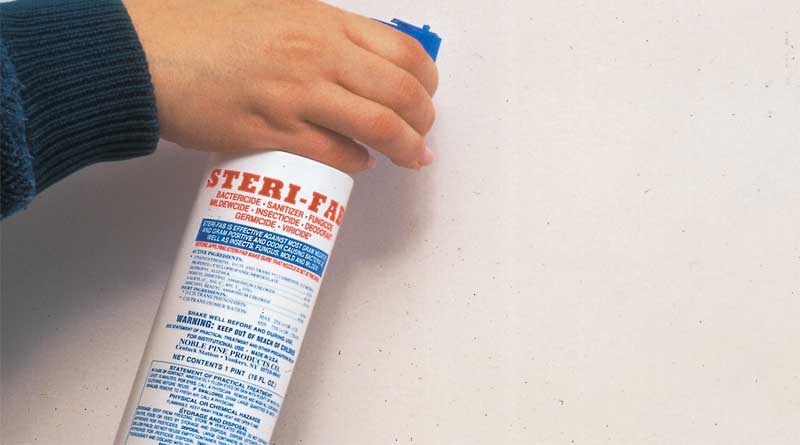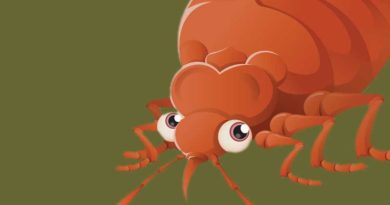Follow-up: The bedbugs are still biting!
Bedbugs are no longer a pest of the past or characters in a nursery rhyme. They are back with a vengeance, and they are causing real problems. The little blood suckers do not discriminate. They can be brought into a luxurious resort just as easily as they can be brought into a rundown motel in the bad part of town.
“Bedbugs are excellent hitchhikers. They ‘stowaway’ in the personal belongings of travelers, then they are introduced into the resorts and hotels from someone that has them in their personal belongings,” said Dr. John Barcay, an urban entomologist and senior scientist for Ecolab, a company that specializes in cleaning, sanitizing, food safety and infection prevention products and services.
“Increased media attention and litigation have brought more public awareness to the allusive bedbug. Bedbugs have resurged over the last several years primarily due to an increase in international travel and pesticide resistance, but resort operators and their guests should be aware that bedbugs are not known to spread disease and infestations are treatable, especially if they are caught early. Ecolab’s science-based bedbug program targets all life stages of the bedbug so infestations can be eliminated effectively and quickly.”
Ecolab and the American Hotel and Lodging Educational Institution have developed what they call the Bedbug Tool Kit. “If your readers access the website, www.bedbugtoolkit.com, they will see that it provides resources that will help answer questions about bedbugs, and it explains what resorts can do about them. It contains a bedbug pocket card that the housekeepers can keep on their service carts or in their pockets, and it tells them what to do should they suspect that bedbugs are present in the unit. There’s an informational poster on bedbugs that can be displayed in their office areas. We also have an instructional video and a bedbug fact sheet,” John said.
If bedbugs are suspected by resort staff members, John said they should leave all items in the unit including vacuums, carts or other cleaning supplies, and quarantine the unit until a reputable pest management company inspects the unit for bedbugs and their signs. “These include eggs, nymphs, adult bedbugs and fecal spotting in and around the bed and other areas within the unit. One live bedbug defines an infestation. The inspection is then expanded to adjacent units – to the left, right, above and below the infested unit. Bedbug service – treating infested and adjacent areas with effective products and protocols that maintain the safety of guests/occupants – is then scheduled to quickly eliminate the infestation.”
The recent comeback of the bedbug has resulted in a barrage of new products and services all jockeying for position. How do you chose which options are best for you? The potential problems bedbugs can cause your property (if you are not already dealing with bedbugs) are numerous. Your brand and reputation could be tarnished, you could be sued, and you could have itchy, furious guests demanding refunds and compensation for not only being bitten while on your property, but also for unknowingly taking the bedbugs home with them causing further financial and emotional distress. We have looked into some detection and treatment options that are available. We are not necessarily endorsing any of these options. We are simply providing you with the information so you can decide what is best for your property.

Noble Pine Products offers a product called Steri-fab, a disinfectant spray that purportedly kills bedbugs. “Steri-fab is unique among bedbug products. It is both a bedbug killer and a disinfectant. In addition, it can be applied to mattresses, upholstered furniture, carpets and almost all inanimate surfaces. It’s a ready-to-use product that has been marketed for over 40 years. It requires no dilution. It is not a restricted-use product and can be applied by anyone. It dries quickly and is not active when dry,” said Eric Bryan of Nobel Pine Products.
Douglas Stern is the managing partner of Stern Environmental Group, a pest control services company in the New York City area. He told us about several bedbug detections and treatment options. “Stern Environmental Group successfully completed field testing the Termite and Bedbug Detector in October 2010. The unit is so sensitive that it has successfully detected the presence of just one bedbug in a hidden space,” Stern said.
Stern told us that this new bedbug discovery tool measures – with its various arrays of CO2 sensors – increased levels of CO2 which is exuded by bedbugs as they digest their blood meal. “As bedbugs like to harbor in concealed and small hidden areas such as in cracks and crevices, in nightstand drawers, behind headboards, in box springs, inside electrical outlets, inside bedside clocks, and even in the rolled edges of mattress pillow tops, the CO2 they exude as they digest their food builds up to a detectable level. The Termite and Bedbug Detector will indicate the presence of this increased level of CO2 with a series of beeps,” said Stern.
Another product Stern told us about is the Bedbug Night Stick. “The Bedbug Night Stick is an easy-to-use active bedbug detector that you tuck inside your bed rail or bed frame. You can tuck in corner traps at all corners of your box spring for greater protection. Bedbugs get stuck in the sticky indentations of the Night Stick. This new bedbug detector is the perfect cost-effective low-profile bedbug detection device for resorts and hotels. It attracts bedbugs with a small baited dot, creates a safe harborage place for bedbugs with fecal detection, and it traps bedbugs for visual inspection and confirmation,” Stern said.
Stern said another important tool in the battle against these blood-sucking pests is the development of bedbug monitors. “I consider bedbug monitors a ‘game changer’ in the fight against bedbugs and one that no one is talking about yet. Their use may soon be necessary for all hotels and may even be considered by judges and juries when defending against bedbug litigation. Bedbug monitors will allow professional exterminators to identify pest problems early and thereby contain both the infestation and the treatment cost,” Stern continued.
“There are several types of bedbug monitors available, and the prices range widely from $5 to $1,000. Several of these bedbug monitors actually have a bedbug blood meal lure, and in some cases – in the more expensive products – a CO2 source to imitate a human body presence to actively attract bedbugs. Others have a sticky attractant in a glue-like trap or use special disks that fit under bed legs, or a small heat source,” said Stern.
Another available treatment option for killing bedbugs is Cryonite, a non-toxic patented technology that rapidly freezes pests to death. “Cryonite has been used extensively in Europe and Australia to kill many types of insect pests, including German cockroaches and bedbugs. Stern Environmental is one of the first pest control firms to bring this innovative and effective non-toxic pest control treatment systems to America. The Cryonite machine sprays CO2 snow at -110º F. The CO2 snow is not poisonous and leaves no wet or gummy residues, and there is no risk of pests developing a resistance to the treatment,” Stern explained.
Stern also told us about mattress liners and encasements. “A mattress liner is a lightweight pyrethrum saturated liner that lies on top of your mattress and is placed just underneath your mattress pad. It kills bedbugs on contact and the material from the manufacturer states it will kill pests for up to two years. It is not suitable to be used in beds for children under five years of age. This may be a more price considerate alternative to bedbug-proof mattress encasements,” said Stern.
“As far as bedbug encasements are concerned, we like the product from Protect-A-Bed for several reasons. It was designed by bedbug extermination experts, and it contains a membrane that is lab-tested and certified to be bedbug bite-proof. These encasements prevent a spread of a bedbug pest problem in resorts and commercial properties, and they are a chemical-free treatment that provides peace of mind and protection from bedbug bites after a treatment,” explained Stern.
More information about bedbugs can be found on the Environmental Protection Agency’s website.
www.epa.gov/bedbugs



